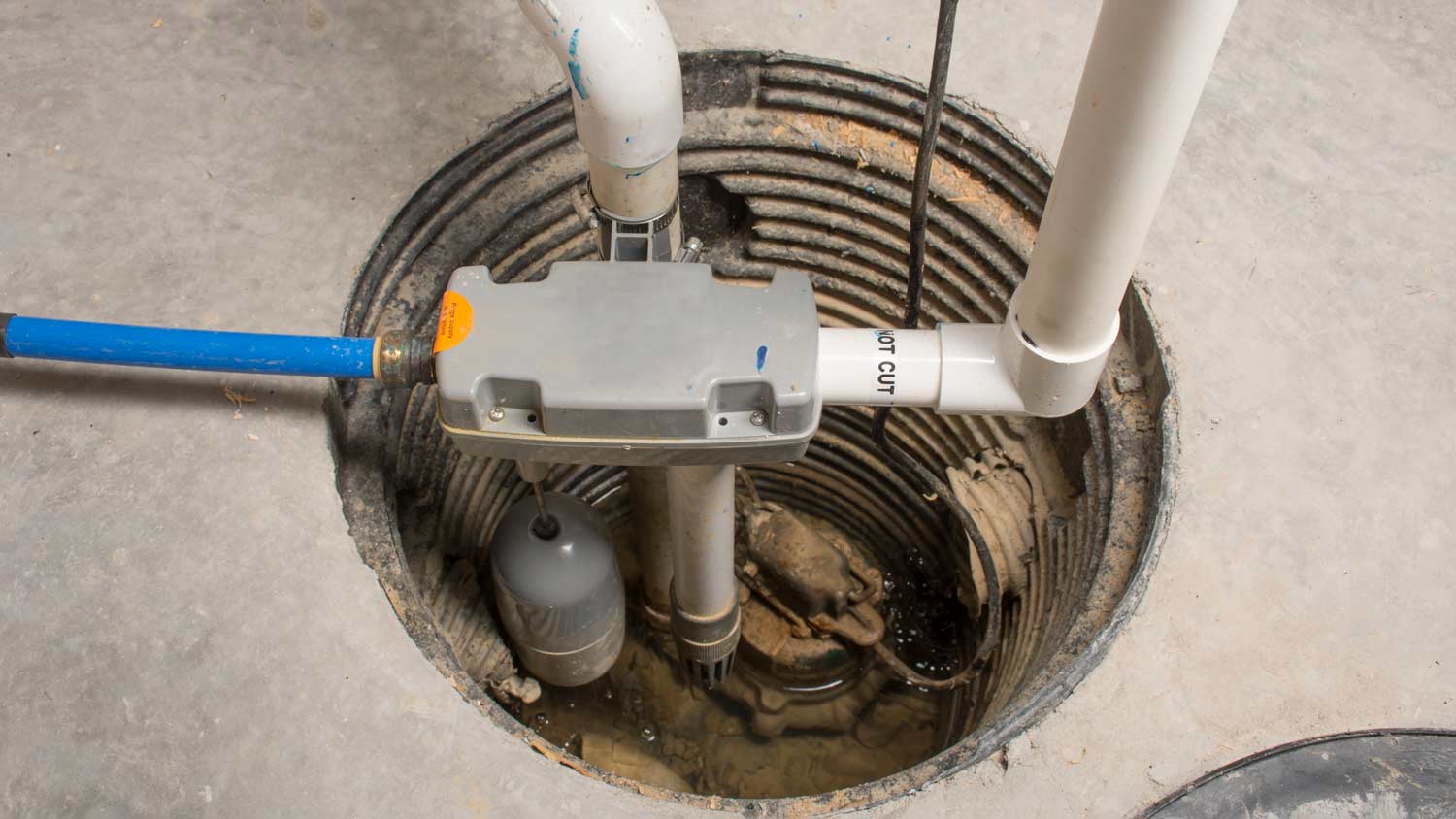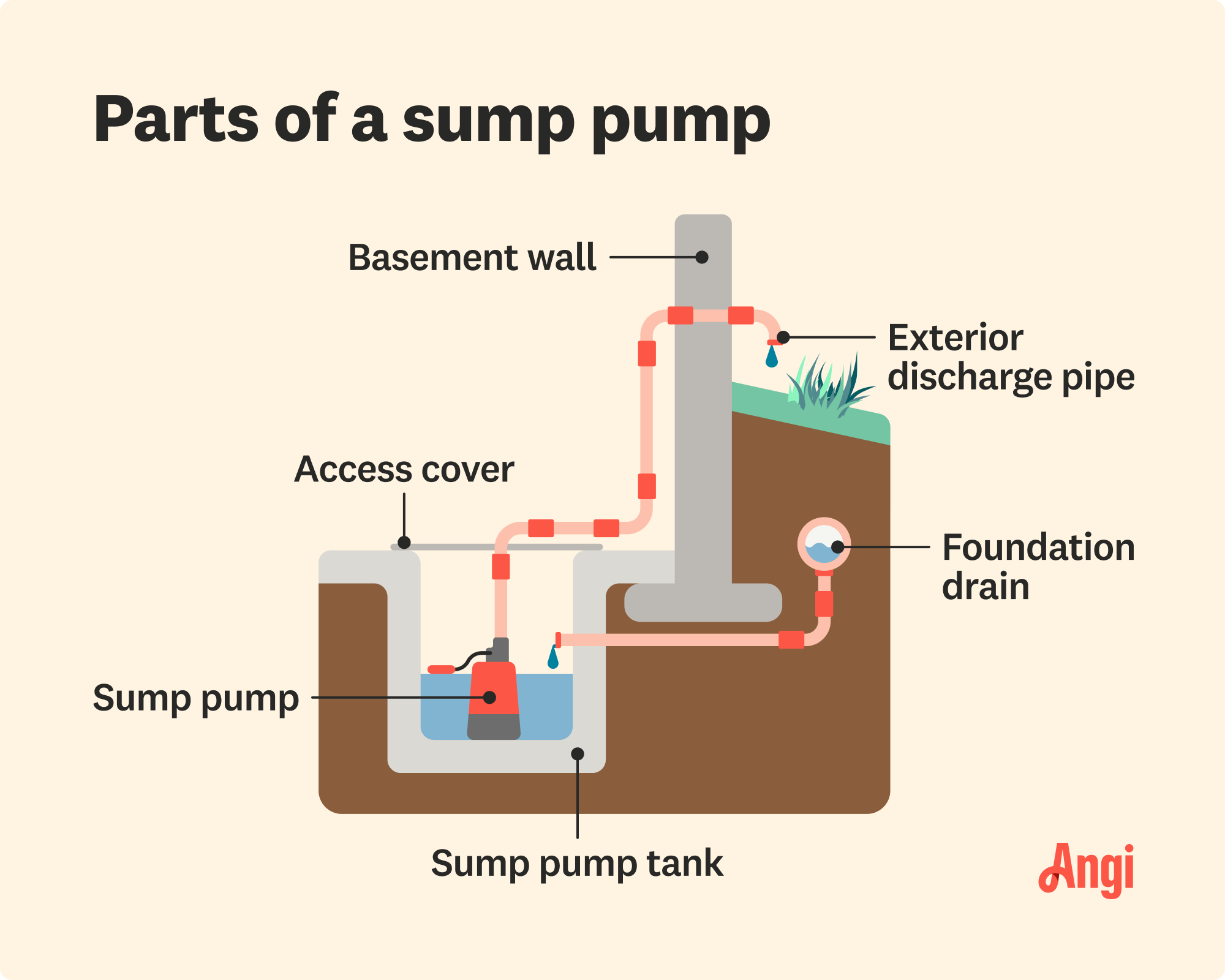
Cisterns can save you money and help the environment. So what’s the cost of a cistern and how does it compare to other rainwater collection systems?
Picking the right pump is key to keeping dry


Utility pumps are portable and can drain water from flooded homes, water heaters, and more, but sump pumps are stationary and primarily prevent flooding in homes.
Utility pumps are more affordable and easier to install than sump pumps.
Sump pumps are only located in basements and crawl spaces, but utility pumps can be used anywhere.
When you need to move water out of your home quickly, a utility pump or a sump pump can get the job done. Despite serving a similar purpose, these two types of pumps are quite different. So, how do you know when you need a utility pump versus a sump pump? Let’s explore the differences.
One of the most important differences between a sump pump versus a utility pump is how they’re used. Utility pumps are portable and helpful for removing water from a variety of spaces, but sump pumps are permanently installed in the lowest part of your house and primarily prevent flooding.
| Type of Difference | Utility Pump | Sump Pump |
|---|---|---|
| Main purpose | Draining or removing water from many different places | Flood prevention |
| Location | Anywhere | Basement/crawl space |
| Setup | Easier | More complex |
| Use | One-time situations | Long term |
| Cost | Less expensive | More expensive |

Utility pumps—also known as transfer pumps—have several applications. Many models are portable, so you can use them to drain a water heater, remove water from a flooded basement, empty an aquarium, and more.
While utility pumps are often involved in cleanup efforts, sump pumps are designed to prevent a mess in the first place. Their main job is to get rid of excess water from around your property to prevent flooding, water damage, and mold and mildew growth.
Many utility pumps are portable, which makes them suitable for indoor and outdoor jobs. A utility pump should connect to a garden hose or tubing so that you can decide where to discharge the water.
Sump pumps don’t have as much flexibility in terms of location. These devices sit in a hole (known as a sump pit) in the lowest part of your home. Most commonly, that’s your basement or a crawl space.

When you buy a portable utility pump, you won’t need to install it anywhere. But before you can use it, some minimal setup is required, including connecting the garden hose and plugging the pump into an electrical source.
Installing a sump pump requires much more time and effort. Some key steps in the process include:
Identifying a location for your sump pit
Digging a hole
Positioning the pump in the pit
Running a discharge pipe from the pump to the outside of your home
Mixing concrete and sealing around the pump area
Installing a sump pump takes quite a few tools and supplies (as well as the sump pump itself). If you make a mistake, it could result in significant flooding or water damage. For that reason, it’s best to hire a local sump pump installer for this project.
Utility pumps are excellent for fixing temporary issues—whether that’s a flooded bathroom, an overflowing fish pond, or a clogged drain. In other words, you won’t rely on it for ongoing or preventative purposes.
By comparison, sump pumps are important for preventing water-related problems inside and outside of your home. These devices run regular cycles, during which they collect excess water and direct it away from your house and its foundation.
Utility pump prices vary depending on the model and brand you choose, but they cost between $50 and $250 on average. Sump pumps can be a bit pricier. Pedestal sump pumps range from $60 to $170, and submersible models cost $50 to $400.
From average costs to expert advice, get all the answers you need to get your job done.

Cisterns can save you money and help the environment. So what’s the cost of a cistern and how does it compare to other rainwater collection systems?

The cost of a well inspection depends on the design of your well, the location of your property, and the add-ons you select. Use this guide to plan your budget.

Dry wells are handy for anyone who’s experiencing drainage problems. But dry well installation costs can vary depending on its size, location, and volume.

Sump pump maintenance is key to keeping your home flood-free during heavy rains. Find out how to keep your sump pump in top shape with these tips.

Well pump pressure switch problems leaving you dry? Get flowing again with our guide on how to tell if it’s failed or needs repairing.

Keep your water flowing and discover what causes air in water pipes with a well. Learn the signs of trouble and what to do if your well pump is acting up.